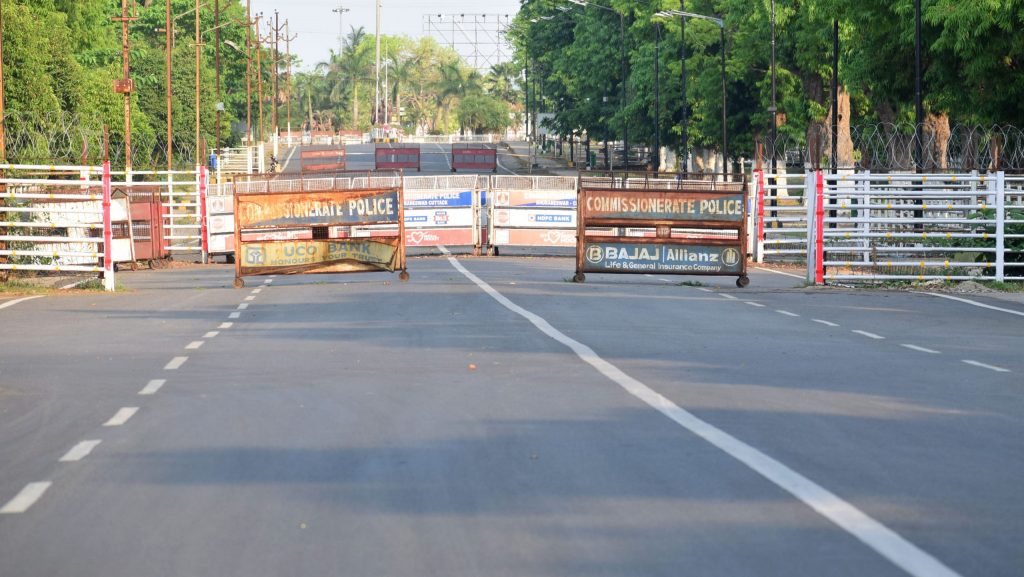Amarendra Das
Fears are that the global economy would enter into the worst recession since the Great Depression of 1929. India with a three trillion dollar economy would be badly affected by the lockdown; and so would Odisha. The Economic Survey had pegged the growth rate for the state at 6.16 per cent against the national average of five per cent in 2019-20. The state’s growth rate for 2020-21 was projected at 7 per cent and national average at 6 to 6.5 per cent. However, the impact of Covid-19 has turned every projection on economy upside down.
Economic targets are achieved in the last month; and due to the lockdown, the downward revision of GDP and GSDP for last fiscal could be around 2 per cent. The worst would come in the current fiscal year, 2020-21. The IMF has projected India’s growth rate for the current fiscal at 1.9 per cent.
The effect of the global financial crisis was felt in India in 2009-10.The real growth of Odisha declined to 4.55 per cent in 2009-10 from 7.75 per cent in 2008-09. Due to external demand shocks, the state’s growth rate declined by more than 3 per cent points. Now, the lock-down has halted all economic activities, and the ill effects will continue. Global demand for the state’s products would come down. Therefore, the growth rate in the first quarter would be negative; and in the subsequent quarters, it may get into positive zone. The overall growth for Odisha would be negative in this fiscal.
Odisha’s GSDP would be affected due to internal as well as external shocks. Economies that are more connected to the world in terms of higher volumes of exports and imports are going experience a major setback. Trade intensity of India is only around 29 per cent of the GDP, of which export is about 11 per cent and import about 18 per cent. In spite of being a less industrialized state, Odisha does export a sizeable amount of products to other countries. In 2018-19, Odisha’s total export value to the world was worth `47,619 crore. The share of export in Odisha GSDP is around 12 per cent. The volume of export of all these products would decline.
Within the state’s GSDP, the primary sector has 31 per cent share which consists of agriculture, forestry, fishing, mining and quarrying. During the lock-down period, the mining and quarrying sector has been badly affected. The agriculture sector has been affected. During the lockdown period, the vegetable prices declined. The prices may return to normal once the lock-down is lifted. Thus, even if the state’s agriculture sector has been affected, it would witness positive growth. The Economic Survey of Odisha had forecast 7.61 per cent growth for agriculture and fisheries sectors for year 2018-19. Due to the impact of Covid-19 in the first quarter, this may decline by at least 2 per cent. Thus, the agriculture sector may record about 5.5 per cent growth in 2020-21.
The mining and quarrying sector in the state would be affected because of the uncertainty in export of minerals and fall in the demand for metal products.. The estimate of growth rate for the mining and quarrying sector for 2019-20 was 3.42 per cent.
Within the secondary sector comes manufacturing, construction, electricity, gas, water supply, and other utility services. The manufacturing segment, which contributes 18 per cent to the GSDP is already hit. This may see moderate growth from the second quarter. This sector was set to grow by around 6 per cent in the last fiscal and may slip to negative growth in the current fiscal. The slowdown in the construction sector may aggravate in this fiscal. The energy –electricity and gas — sector is affected in the first quarter due to shutdown of industries. These activities may pick up from the second quarter. Water supply and other utility services may not be affected much. The secondary sector has 29 per cent share in the state GSDP.
The tertiary sector has 41 per cent share in the state GSDP. This sector has already been badly affected. From the second quarter, this sector may regain momentum. Positive growth may be witnessed only in activities such as public administration and defense services. All other sectors may witness a fall in output.
In spite of a possible positive growth in agriculture, fisheries and forestry sectors, due to their small contributions to the GSDP (20 per cent), the overall growth of the state in 2020-21 may slip to negative level or just remain around one per cent. A negative economic growth would imply less revenue collection and limited fiscal space for the state government.

